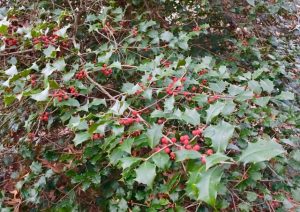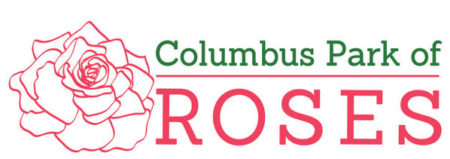
Winter is probably the best time to assess a garden and determine whether changes are needed. It is in winter that one can see the bones of a garden. “Good bones in the garden is about the arcs, high points, solid shapes, curving or straight paths, all the things that give the eye interest and a sense of presence.” ( Ilona Erwin ).
On your next winter walk through the Columbus Park of Roses, purposefully observe its components and apply what you learn to your own garden. Pay attention to such things as the layers of the plants in the garden, their shapes and locations. Examine the gardens’ hardscape, non-plant components. Specifically:
Think about the impact the majestic trees give to the Columbus Park of Roses. Can you imagine the Formal Rose Garden without the Honey Locust trees flanking its main walkways? Or the stately Maple, Oak and Walnut trees?
Carefully notice the shapes of the deciduous trees. How do their bare branches make the gardens interesting in winter?
Take time to examine the bark on different trees. What visual interest does it create?
How many conifer trees of differing shapes and shades of green can you see? The Columbus Park of Roses has a large collection of conifers, primarily in the Backyard Garden and along the north side of the Formal Rose Garden.
Have you noticed that some trees are shorter at full growth? The Magnolia and Dogwood trees are good examples. They provide another layer of interest.
How many large mature shrubs can you find? Do you see the Witch Hazels (native version blooms in November-January, and the non-native, seen above, begins blooming in February).
Can you locate the burgundy-colored leaves of Oak Leaf Hydrangea? How about the mature Elderberry in the Herb Garden? These plants provide a middle layer in the garden and make it more visually interesting.
Have you noticed some smaller shrubs such as Spicebush or the Golden Mop in the Perennial Garden?
What hardscaping do you see? Consider what the boulders, trellises, the fountain, bird baths and benches offer to the visual interest.
Do the walkways add structural beauty through their location and design?
Consider the plants left standing in the Perennial Garden and Herb Garden. What interest is provided by the Ornamental Grasses? By the seed heads of the plants? Notice the rose bushes that now are left standing until spring.

Do you find the rose hip fruits in their varying sizes and colors interesting? How about the berries on the Crabapple trees, Winter Berry bushes and Holly trees? Have you found any seed pods? Did you notice the different sizes and shapes of cones? These are all ornamental gifts of the garden.
So, as you visit the Columbus Park of Roses, be sure to take note of all the elements that contribute to a visually interesting garden — even in winter. Then, see what principles you can apply in your own garden.
